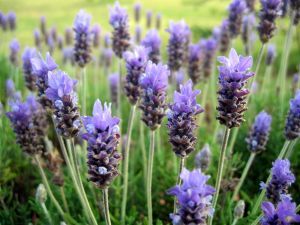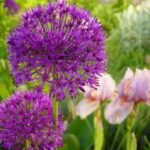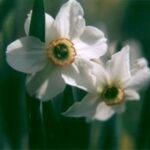Lavender plants, with their tiny purple flower make fragrant additions to a flower or herb garden. Lavender can be planted in a mass, or along with other plants. With is rich perfumed fragrance, lavender is a natural to be planted in combination along with roses. The fragrances of rose and lavender complement each other, and indeed, are a popular combination is some of the best perfumes.
Lavender brings to mind the romance of lavender and lace of the Victorian era, but continues to be a popular fragrance in contemporary times.
Lavender fragrance is popular in perfumes, colognes, soaps, bath oils and in body care products. Lavender flowers are ofter used in sachets, tiny bags to scent drawers with. Lavender essential oil is popular for use in aromatherapy. It’s not just the flowers on the lavender that are fragrant, the leaves are also fragrant. Brush up against a lavender plant along a pathway with the ankle and the plant will reward you by releasing it’s fragrance from it’s grey-blue leaves
It’s easiest to start lavender from a plant. It takes about three years for lavender to reach full size. Plants should be pruned every year after bloom. Harvesting and pruning are two different things. Harvesting lavender is cutting off the stems of lavender flowers after they have bloomed and their color is bright and vivid. The blooms can be used in dried arrangements or in a fresh herbal wreath. The flowers can also be stripped off of their stems, for use in a sachet or potpourri.
Lavender likes a sunny, well drained location. Lavender will not thrive in soil that is not well drained. Plants can tolerate some shade but may grow leggy. In colder climates, plant in an area where the plants get protection from the sun. Lavender can make a delightful border, or hedge, in front of taller flowers and plants.
There are different varieties of lavender. Lavender varieties have different sizes, colors, shapes and fragrances. There has been a lot of cross breeding in lavender, so some plants are combinations of varieties.
English Lavender: the most fragrant variety of lavender grows 1 to 3 feet high, with short crooked branched stems. Varieties of English Lavender include English, Munstead, Hidcote, Hidcote Pink, Jean Davis, Sarah and Vera. English lavenders bloom in mid to late spring. Their leaves remain fragrant for the rest of the year. The lavenders have flowers from dark purple to pale pink, depending upon their variety. English lavender is what is actually used in what is called French lavender. The term French lavender simply means that the lavender was grown in France.
Non-English Lavenders can become quite large and untidy looking. Non-English lavenders are not as fragrant as English lavender. These lavenders include Spanish, Yellow, Sweet, French, Allardii, Goodwin,Creek Gray and Woolly Lavender. These lavenders do best with a good pruning about four to five weeks into the bloom cycle.
Lavandin are English Lavender Hybrids. They start blooming just as the English Lavenders are finishing and bloom to mid summer. Lavandins are profuse bloomers that smell great. Provence, Grosso, Abriali, Fred Boutin, Dutch Mill, Grappenhall, Seal, Hidcote Giant and White Grosso are the Lavindin varieties. Lavandin are great to line the drive or to border the garden with.
Lavender varieties have small clusters of flowers borne on slender green stems with foliage of spiky grey-blue. The plants make great fragrant borders and complement many other flowers plants and flowers.





